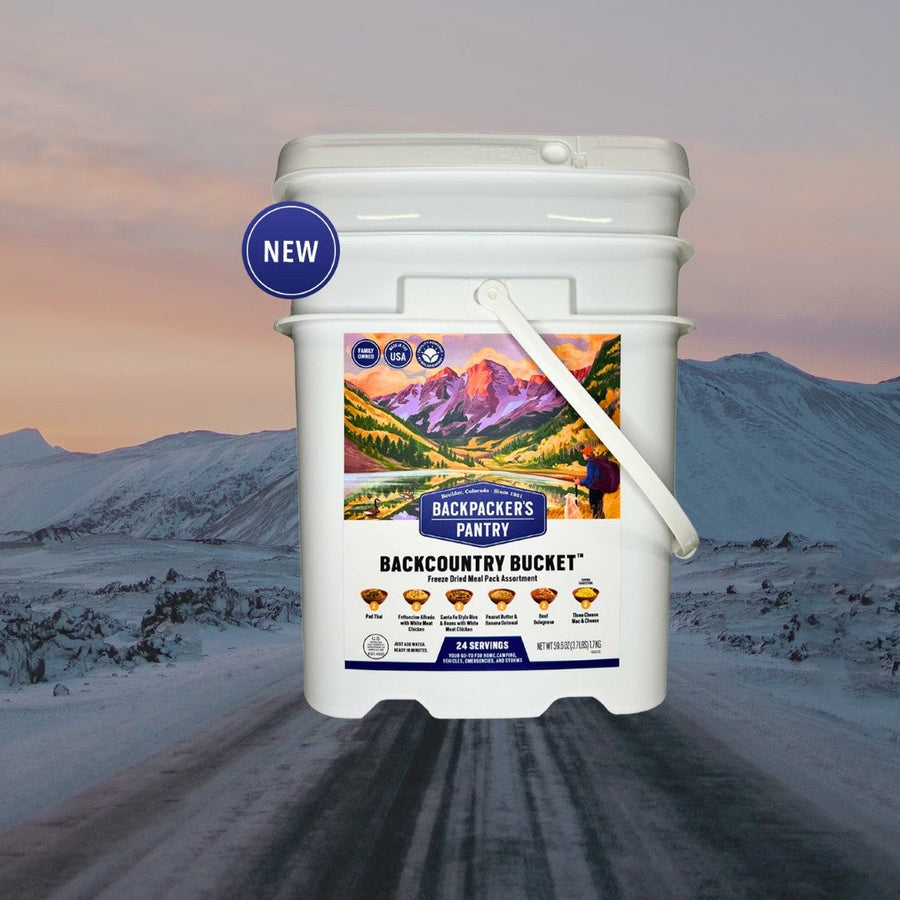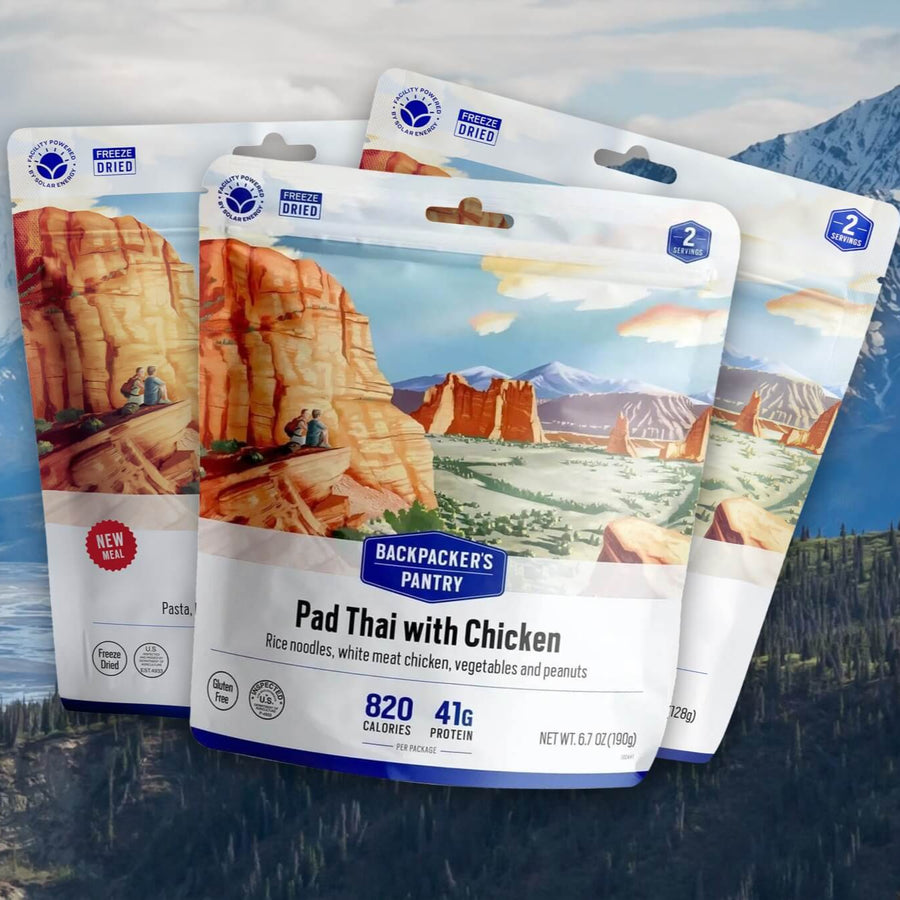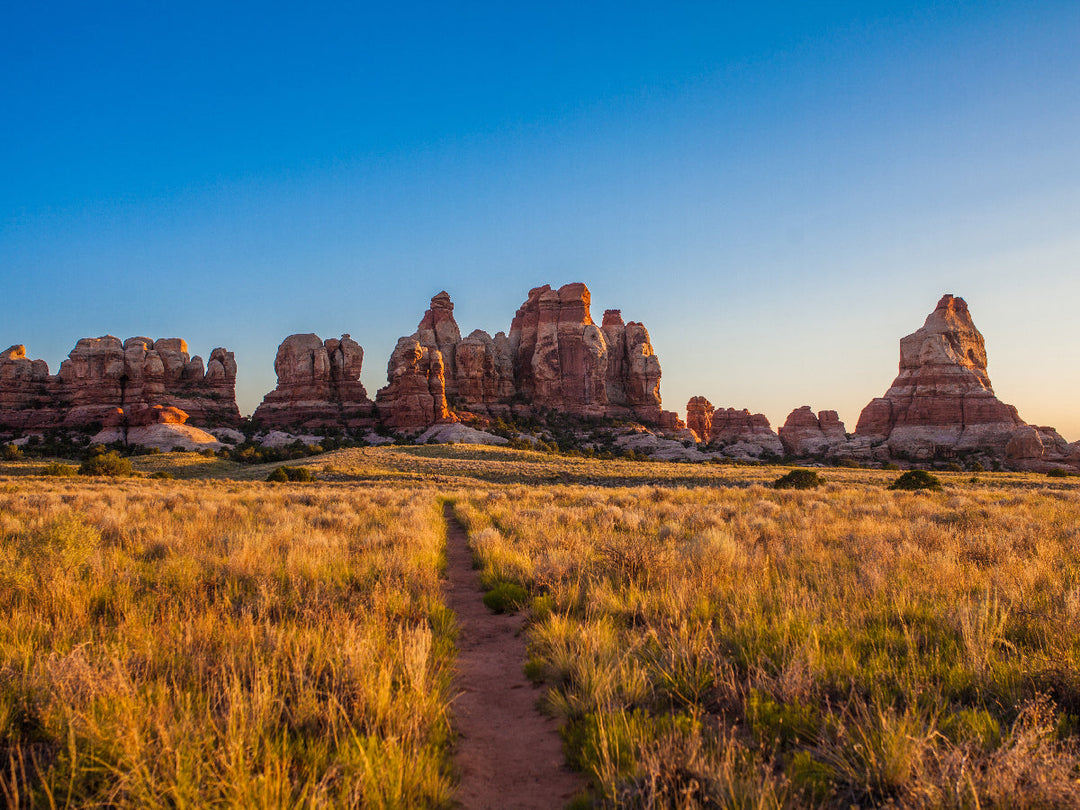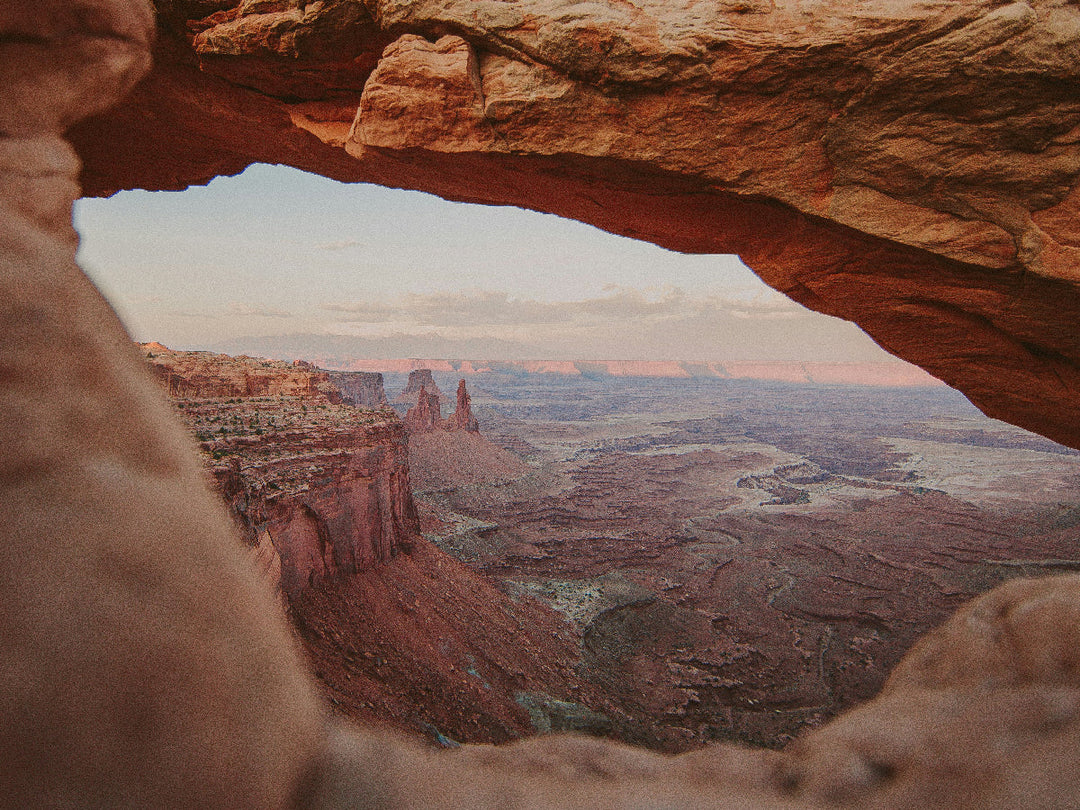The Ultimate Guide to Backpacking with Kids
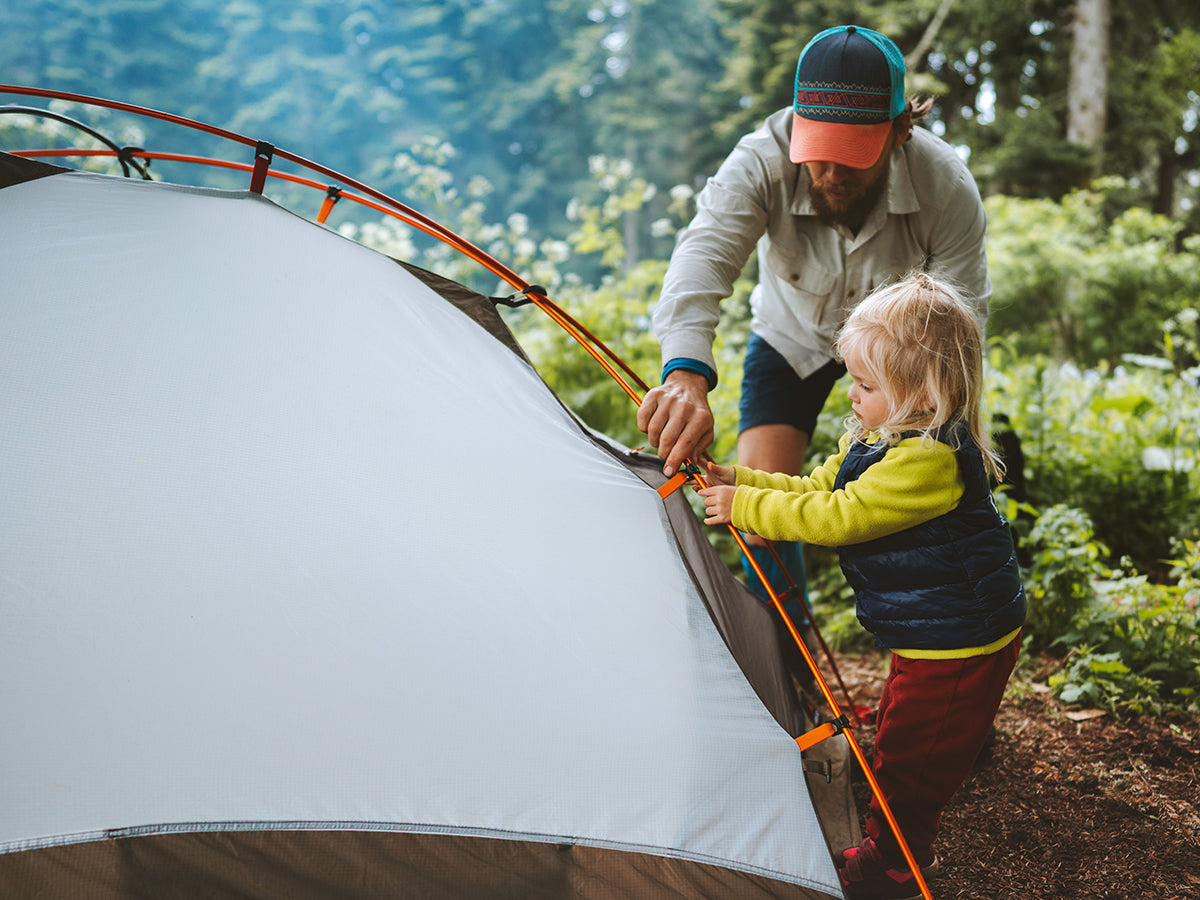
Heading out for a backpacking adventure with kids can be an incredibly rewarding experience for the whole family. Introducing your kids to nature is a great opportunity to expose them to something new and foster their sense of exploration. Successful backpacking trips with kids, however, require thorough planning and preparation to ensure everyone's safety and enjoyment.
Here, we’ve outlined some of the most important things to consider when backpacking with kids:
When Is the Right Age to Try Backpacking?
If you’re an avid outdoors family and want your kids to enjoy nature as much as you, start them as young as you feel comfortable on backpacking trips. Yes, this can mean as early as three if you take it easy, don’t rush the process, and are ready to carry them as needed. While brands like Osprey sell fantastic child carrier backpacks, three is also the age when kids are likely fully potty-trained, so diapers are out of the equation.
Once kids are able to walk on their own (and a slightly more consistent pace) around six, they can feel more confident backpacking a mile at a time with you there as support.
By the time your kid is around middle school age, it’s going to be exciting to see them really start to keep up with you. While they may still need more breaks than you, you’re going to be able to travel further distances and explore even more places.

Planning a Backpacking Trip with Kids
Even if you’re a pro at trip planning for adults, backpacking with kids is a whole new experience. First off, you need to find a destination that’s suitable for children, considering factors like trail difficulty, distance, and length of stay.
Remember, a four-year-old and a ten-year-old couldn’t be more different, so take your kid’s age into mind when considering these factors of planning a trip.
Choosing the Right Distance
The first things to consider when deciding on a distance are age and their experience hiking. Especially if your kid has never backpacked before, you may want to just start with very low mileage and ease them into the experience… even if you’re itching to take them to your favorite remote spots.
Remember, it’s about the journey, not the destination, especially with tiny legs. You want your whole family to have positive associations with backpacking, so there’s no such thing as a too-easy trip. If your kid is requesting something more difficult, then let them take the lead in picking your next trail!
Backpacking with Toddlers or Kids Under Six
Stick to one mile each way until they are ready for a further distance on future trips.
Older kids
Start with two to three miles and build up from there depending on their tiredness levels and enthusiasm for the trip.
Bathroom Training
Every kid has a different attitude when it comes to going to the bathroom, so when you’re planning your trip, it’s important to anticipate how they will adapt. While not extremely common in the backcountry, some designated sites will have latrines (outhouses). Having a designated bathroom that resembles something at home can be a great transition for kids in the three to six range.
If you are heading further into the backcountry and need to use the foxhole method, give your kid a lesson at home. Practice digging 6-8 inch holes and stress the importance of going far away from water sources. If you get the awkwardness out of the way, then you encourage them to ask for your help once you’re on the trail.
If you are nervous your child will have a hard time adjusting to digging a hole, you may opt to carry a camping toilet, although they are typically meant for backpacking.
Especially for young girls, you may want to consider purchasing a Kula cloth to encourage wiping and prevent infection.

Choosing the Right Kids Backpacking Gear
The first thing to consider when choosing gear is how much of your kid’s gear you’ll realistically be carrying (and if you will have to carry them for part of the hike). If your kid is a confident hiker, it can feel very empowering for them to carry at least some of their own gear. Even when a bulk of their stuff winds up in your bag, they’ll be proud to have a child-sized backpack full of essentials.
Finding the Right Backpack
For kids six or older and confidently carrying their own gear, you should look out for a sturdy, padded backpack around 30L. It’s critical their backpack does not weigh more than 15% of their body weight, so keep in mind some backpacks’ frames are very heavy.
Once middle schoolers and teenagers are an adult height, you can ease them into carrying a 55+L pack pushing 20% of their body weight, depending on their size, comfort, and ability.
When selecting a backpack, comfort is key. On top of fitting them at a store or by using the below link, check the pack for quality padding in the shoulders and hip belt.
REI has a great guide for how a backpack should fit. While it’s geared towards adults, follow these easy visuals to guide checking your child’s gear.
Must Have Backpacking Gear for Kids
- Shoes or boots that are comfortable and they have hiked in before
- Sleeping bag and pad that are the right size and warmth rating
- Rain shell
- Insulating layer or down jacket (depending on the weather)
- An extra set of clothes and extra socks
- Camp shoes
- Inflatable backpacking pillow (lightweight, packable, and comfortable for kids)
- Hat and sunglasses
- Sit pad or chair for relaxing at camp or taking breaks on a hike
Items You Might Want to Leave Behind:
- More than one book or more than one stuffed animal from home (the latter won’t be important to older kids, but for a young first-timer’s morale, it could mean a lot)
- Heavy winter jacket
- Cotton layers
- Heavy water bottles (opt for a child-sized reservoir)
There are a plethora of brands that have kids’ hiking collections. Whether you invest in new or used gear, depending on your budget and your kid’s growth spurts, make sure everything fits and they’re comfortable using their gear.
Temper tantrums spurred by blisters or too-small sleeping bags are avoidable if your kid is an active participant in choosing and testing their backpacking setup and they feel prepared going into the trip.
Preparing Your Kids
Preparing children for a backpacking trip involves more than just packing their gear. It’s also an incredible opportunity to teach them Leave No Trace skills, basic first aid, and general outdoor knowledge.
How to prepare your kids for backpacking
- Engage them in the trip planning process to build excitement and anticipation for the adventure ahead.
- Ask them if they have a favorite place or type of landscape (forests, rivers, lakes, etc.) they’d like to explore.
- Make sure they’re comfortable with their gear. Set up the tent in the backyard together and pack up/walk around with their backpack on.
- Go for a walk together in your hiking shoes to make sure they are comfortable.
- Test out your camping meal together in the kitchen and go to the grocery store to pick out your snacks.
- Openly discuss new situations (like going to the bathroom outside or encountering wildlife) and address any questions.
- Take a lap around the neighborhood every day leading up to the trip to get them used to walking with their gear.
Safety Considerations
Safety should always be a top priority when backpacking with kids. Some basic safety concerns to cover include:
- Sticking together on the trail
- Telling an adult when they’re going off to the bathroom
- Following the map and communicating directions
- Keeping an eye on the weather
- Wildlife safety
- First aid skills
- Staying fed and hydrated
Without scaring anyone, you can set clear rules and protocols for having a safe backpacking trip. Reiterate the adults on the trip are there for any questions and be sure to lead by example for all the above elements of trail safety.

Food and Nutrition
Proper nutrition is essential for maintaining energy and stamina on the trail, and having a picky kid on your hands can cause a lot of issues. Bring your kid to the grocery store with you to pick out their snacks for them to carry, then pack extra snacks just in case. Camping food can feel very new for some kids, so it doesn’t hurt to make a backpacking version of an at-home favorite, like mac & cheese, or serve your backpacking meal for dinner at home a few nights before you go on your trip.
Finally, make sure you are monitoring how much water your kids drink. A kid-sized hydration pack encourages drinking water on the trail, and you should vocally encourage hydration throughout your time at camp. Flavored hydration packets can be a fun treat and make drinking water more enticing.
Entertainment and Activities
The possibilities are endless when it comes to entertainment and activities, and it all starts with keeping children engaged on the trail. Giving them a task, like handling the map or compass, enhances their experience and sense of leadership. See something cool while hiking? Stop and investigate it. As we said before, planning a shorter hike allows you to take multiple breaks, either for energy- or curiosity- related reasons.
When you get to camp, you can take a nature walk (if there’s still energy) or turn setting up camp into a game. Depending on your kid’s age, a book or a new card game are great evening options as well.
We put together a list of camping games for adults, but many of them are just as much fun for kids.
Expert Advice for Backpacking with Kids
"My biggest piece of advice when it comes to taking your baby and toddler into the backcountry is to set expectations and give yourself some grace. The experience is going to look different, feel different, and be TOTALLY intimidating. Feeling nervous and scared in a space that was once second nature to you can take you by surprise. But it's totally normal to feel that way even though nobody ever talks about it. Make a plan, pack a few extras, but be prepared to be flexible and bend the rules you keep at home."
Meg Atteberry, Content Creator at Meg in the Forest. Outdoor adventure enthusiast and parent to an adventurous 2-year-old.
Troubleshooting Common Issues
Even if you do everything right, kids will always be unpredictable. Despite thorough preparation, challenges may still arise during your backpacking trip. To keep the trip moving smoothly, here are some common issues parents may encounter and tips for managing them effectively:
- Keeping kids motivated and engaged: Encourage children to take on small responsibilities, set achievable goals, and offer positive reinforcement, like carrying some of their own gear or being in charge of the map.
- Bribery in the form of snacks is totally fair game!
- Managing energy levels and fatigue: Managing energy levels starts with not getting too ambitious during the planning stage. Remember, you can always do a nature walk or play a game when you get to camp, but you can’t make a tired and cranky kid walk any further. When you’re on the trail, schedule regular breaks, pack their favorite snacks, and adjust the pace to accommodate the energy levels of the whole group.
- Handling weather changes: While inclement weather isn’t ideal when backpacking with kids, it’s a great impromptu outdoor safety lesson. Be prepared with extra layers and rain gear, and take the opportunity to turn it into a discussion around lightning safety and weather risks. Bad weather may actually become a positive experience.
- Ensuring safety and managing risks: Stress the importance of staying on the trail and sticking together, and reiterate that communication is key when walking off to the bathroom.
- Dealing with hunger and food preferences: Pack a variety of snacks and get to camp ready to cook a meal all kids in the group know they enjoy.
- Managing bathroom needs: Going in the woods can be very funny and also very awkward, depending on the kid. Teach children proper outdoor bathroom etiquette and how to stay clean and considerate to the environment. If they’re uncomfortable or on the younger side, offer your assistance.
- Coping with limited toys and entertainment: Consider this an opportunity to get creative: there are so many new and exciting games to make up in nature. Setting up camp is a great first game, whether you want to make it a race or build a narrative around finding a magical campsite. Your kid is likely to love having tasks to help out, so keeping them involved is a great start.
- Handling sleep disruptions: While you aren’t home, you can still set a similar bedtime to your kid’s typical routine. Sleeping pads have also come a long way, and you can set up a very comfortable area for them to sleep. When it comes to noises during the night, you know how to best comfort your child, but we encourage handling anything spooky with a sense of curiosity and excitement. Everything about backpacking can become an opportunity to learn and ask questions about nature.
- Dealing with homesickness: Being away from home is hard, especially if it’s your child’s first time backpacking. On top of offering comfort and reassurance, try engaging them in familiar routines, like meals and bedtime, to ease the transition into embarking on backpacking trips.
- Addressing behavioral issues: Camping is a break from the norm, and hiking is very tiring. Even with the best-behaved kid, you’re going to have some disruptions, but a backpacking trip is a great learning environment. Setting clear expectations is key, as it gives kids a sense of responsibility and goals for the trip. If there are issues, try to focus on positive reinforcement and redirect any poor behavior toward tangible tasks at camp or on the trail.
Embarking on a backpacking trip with kids is a rewarding experience that can foster a love for the outdoors and create positive family memories. By planning carefully, prioritizing safety, and addressing common challenges proactively, parents can ensure a successful and enjoyable adventure for the whole family.
